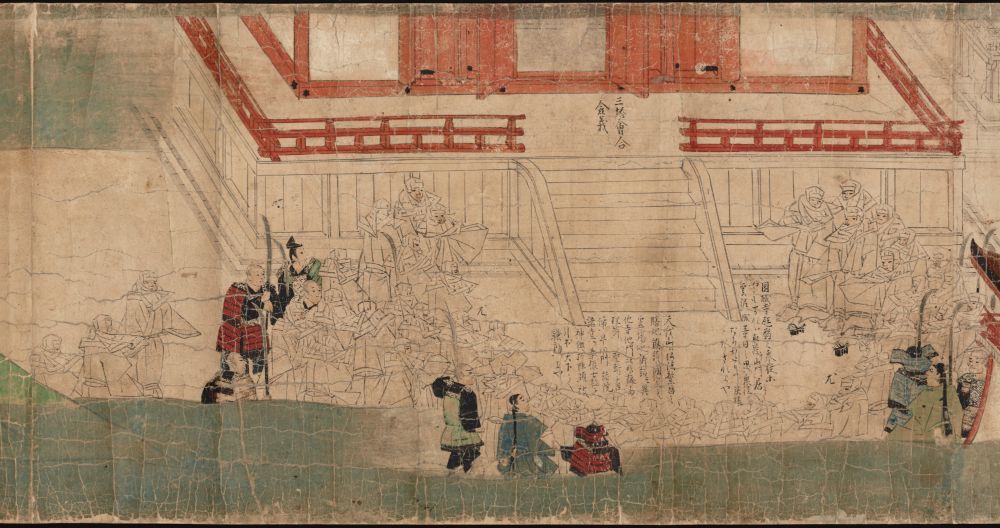

Slightly late #ManuscriptMonday. Illustrated Tales of Heike, 17th century, Princeton University Library.
dpul.princeton.edu/eastasian/ca...


Slightly late #ManuscriptMonday. Illustrated Tales of Heike, 17th century, Princeton University Library.
dpul.princeton.edu/eastasian/ca...






Shakadō Engi, 16th c. Currently on display at the Kyoto National Museum and well worth it!
www.kyohaku.go.jp/jp/exhibitio...


Shakadō Engi, 16th c. Currently on display at the Kyoto National Museum and well worth it!
www.kyohaku.go.jp/jp/exhibitio...


For more on early manuscripts, see: eprints.lib.hokudai.ac.jp/dspace/bitst...

For more on early manuscripts, see: eprints.lib.hokudai.ac.jp/dspace/bitst...









www.britishmuseum.org/collection/o...

www.britishmuseum.org/collection/o...

doi.org/10.1177/0971...

doi.org/10.1177/0971...
![Text highlighted from "He also created." Full text reads: "Ding Huan, a skilled craftsman from Chang’an, made an always-full lamp (changman deng). It had extraordinary decoration, sporting seven dragons and five phoenixes which were supported by lotus-shaped platforms resting on stalks. He also created an incense burner which lay on the bedclothes. It was also called the “censer amid the covers”. The technique is original from Fang Feng [a Han-dynasty skilled artisan], whose skills are unprecedented but now lost. It is not until Ding Huan that the technique is made possible again. To make it, Ding Huan fashioned [a series of] mechanically connected rings. The censer could roll in any direction, and yet the central incense-burning chamber could remain level. Thus, one could position it on the bed covers. This is how it acquired its name"](https://cdn.bsky.app/img/feed_thumbnail/plain/did:plc:sccygdd5kgdqkrixxptv37e3/bafkreid6whi3ijjgpslibr23l52uf66mih3bknz7lceofo2p2sw2v7bhoq@jpeg)


It was awesome🤩🤩🤩

It was awesome🤩🤩🤩
#ManuscriptMonday #Shosoin
shosoin-the-show.jp/osaka/english/

#ManuscriptMonday #Shosoin
shosoin-the-show.jp/osaka/english/
www.nijl.ac.jp/pages/marega...

www.nijl.ac.jp/pages/marega...

(See Adolphson, Gates of Power, 252).
#ManuscriptMonday
colbase.nich.go.jp/collection_i...

(See Adolphson, Gates of Power, 252).
#ManuscriptMonday
colbase.nich.go.jp/collection_i...

